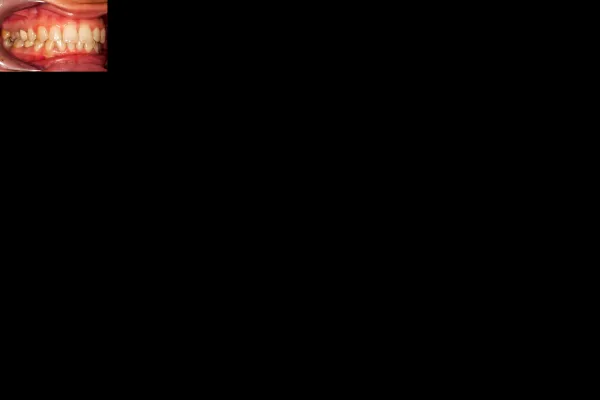Otolaryngology Coding Alert
3 Tips Help You Differentiate Hemi-Thyroidectomies From Completion Thyroidectomies
Hint: Completion thyroidectomies usually follow a previous surgery.
Most ENT coders understand how to report a total thyroidectomy (60240), since it entails the surgeon removing the entire thyroid during a single surgical encounter. However, coding thyroidectomies can get a little bit more complicated when the physician doesn’t remove the entire thyroid, and only removes one lobe, a procedure referred to as a lobectomy.
To clear up confusion about when a thyroid lobectomy should be coded as a hemi-thyroidectomy (60220, Total thyroid lobectomy, unilateral; with or without isthmusectomy) and when you should instead report a completion thyroidectomy (60260, Thyroidectomy, removal of all remaining thyroid tissue following previous removal of a portion of thyroid), check out the following three tips.

1. Understand What Each Service Entails
The first step in coding thyroid lobectomies is to figure out what the difference is between the two procedures. Check out the following breakdown for a primer:
Hemi-thyroidectomy: When the surgeon performs a hemi-thyroidectomy, they remove just one side of the thyroid, typically because that side is affected by a tumor or mass. During this surgery, the surgeon also removes the pyramidal lobe, which joins the two sides of the thyroid.
Surgeons perform this procedure with the intention of leaving half of the thyroid in the patient’s body, allowing the patient to continue to produce thyroid hormones naturally. It’s a lower-risk procedure than a total thyroidectomy, because it avoids risk to the other parathyroid glands or the recurrent laryngeal nerve. This surgery, coded with 60220, pays about $726.
Completion thyroidectomy: Otolaryngologists perform completion thyroidectomies for patients who already underwent hemi-thyroidectomies, but later were discovered to have cancer on the side that wasn’t already excised. The physician then removes the remainder of the thyroid to ensure that all cancer cells are removed from the patient’s body. Because patients often have scarring in the area due to the previous surgery, the completion thyroidectomy can be challenging, requiring a tremendous amount of detail.
Even if the thyroid lobe had been removed during a prior surgery, if thyroid tissue is removed during the completion thyroid, that side is getting a completion thyroidectomy, says Barbara J. Cobuzzi, MBA, CPC, COC, CPC-P, CPC-I, CENTC, CPCO, CMCS, of CRN Healthcare in Tinton Falls, New Jersey.
This surgery, coded with 60260, pays about $1,118. Because it reimburses the surgeon nearly $400 more than 60220, some coders will automatically reach for 60260 even if the surgeon documents a hemi-thyroidectomy, because they aren’t confident about the difference between the procedures. However, it’s important to read the documentation thoroughly to know when the procedure warrants 60260 and when you should instead code 60220.

2. Know When Modifiers Are Necessary
In some cases, you may need to append a modifier to the lobectomy code to demonstrate specifics about what your surgeon performed. For example, if your surgeon documents a completion thyroidectomy performed on both sides of the thyroid, you’ll append modifier 50 (Bilateral procedure) to 60260. “Unlike 60240, which includes the resection of both thyroid lobes, 60260 alone represents the removal of only one lobe after prior thyroid surgeries, so that is why removal of both lobes would require the 50 modifier with 60260,” Cobuzzi says.
In some cases, the physician may need to perform a completion thyroidectomy within the 90-day global period of the total thyroidectomy to ensure that all malignant cells are removed. In this case, you’ll have to append modifier 58 (Staged or related procedure or service by the same physician or other qualified health care professional during the postoperative period) to 60260.
3. Identify Important Keywords
Your surgeon may not always use the words “completion” or “hemi” in their documentation of a thyroid lobectomy, which is why it’s essential that you’re able to spot certain keywords in the documentation that can lead you to the most accurate code.
If the physician documents “thyroid lobectomy,” they are most likely referring to a hemi-thyroidectomy (60220).
If they document scarring from a previous lobectomy, then they are most likely describing a completion thyroid lobectomy (60260).
Related Articles
Otolaryngology Coding Alert
- Surgical Coding:
3 Tips Help You Differentiate Hemi-Thyroidectomies From Completion Thyroidectomies
Hint: Completion thyroidectomies usually follow a previous surgery. Most ENT coders understand how to report [...] - Compliance:
Confirm Medical Necessity in Every Chart to Avoid Audit Scrutiny
Avoid the fate of this otolaryngologist, who could face decades in prison. Have you ever [...] - Modifiers:
Clarify Partial Services With Modifiers 54, 26
Can you identify when the surgeon performs surgical or postop care only? Whatever the reason, [...] - You Be the Coder:
Can You Pick the Right Modifier for This Scenario?
Question: Our otolaryngologist performed a myringotomy and we billed it with 69420- LT. Unfortunately, the patient [...] - Reader Questions:
Can You Bill for Nasal Packing Removal?
Question: The ENT physician performed endoscopic control of a nasal hemorrhage and placed bilateral Doyle II [...] - Reader Questions:
Is Date of Injury Required?
Question: Our claim scrubber is kicking out claims for removing foreign bodies from ears and for [...] - Reader Questions:
Are Photos Required to report 31579?
Question: Are photos or videos required for us to justify reporting stroboscopy? If not, what documentation [...] - Reader Questions:
Should We Submit Nonreimbursable Claims?
Question: For a postoperative, related evaluation and management (E/M) visit within the global surgery period, should [...] - Reader Questions:
Look to K11 Series for Sialoadenitis
Question: Which diagnosis code describes sialoadenitis? Alaska Subscriber Answer: Sialoadenitis describes inflammation of the salivary glands [...]




